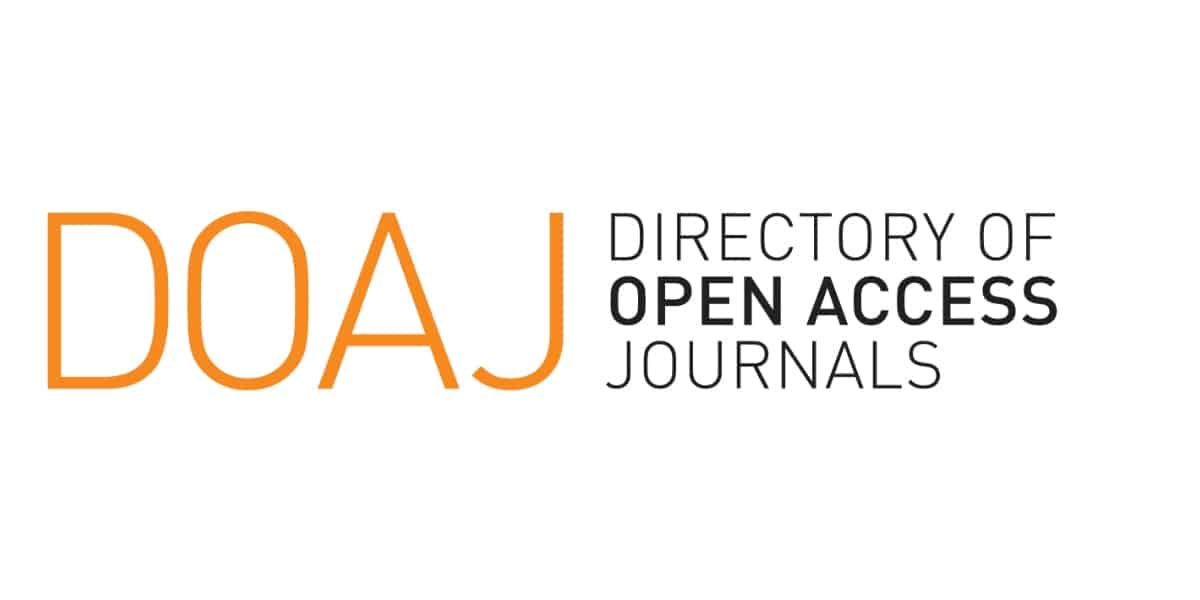Analisis Keberlanjutan dan Strategi Pengelolaan Sistem Penyediaan Air Minum Berbasis Masyarakat di Kabupaten Bekasi, Jawa Barat
Keywords:
PAMSIMAS, keberlanjutan, multidimensional scaling, RAPFISH, SWOTAbstract
One of the government's efforts to improve drinking water services is the implementation of a community-based drinking water supply system (DWSS) through the Community-Based Drinking Water Supply (PAMSIMAS) program. This study analyzes the sustainability of PAMSIMAS to assess its sustainability status, identify influencing factors, and formulate management strategies to ensure the sustainability of the program. The method used for the sustainability analysis is Multidimensional Scaling with RAPFISH, focusing on technical, institutional, financial, social and environmental aspects. SWOT analysis is also used to determine management strategies. The study was conducted in seven PAMSIMAS sites in Setu District, Bekasi Regency, with data collected through questionnaires, interviews and observations. The results show that the seven CBWS fall into the "fairly sustainable" category, with sustainability index values ranging from 60.00 to 72.00. The main factors influencing sustainability are water quantity, sanctions, regularity of payments, community meetings, and protection of water sources. The SWOT analysis shows that six CBWS are in Quadrant I, requiring an aggressive system development strategy. Meanwhile, another PAMSIMAS site is in Quadrant III, requiring a turnaround strategy to minimize weaknesses and capitalize on opportunities.
References
[1] N. Astriani, B. Rubiati, Y. Adharani, S. S. Afifah, R. Salsabila, dan R. Diffa, “The Responsibility of the Indonesian Government to Fulfill the Rights to Water During the COVID-19 Pandemic: Some Legal Issues,” EPL, vol. 51, no. 5, hlm. 327–341, Okt 2021, doi: 10.3233/EPL-201044.
[2] Peraturan Presiden RI, Peraturan Presiden Republik Indonesia Nomor 18 Tahun 2020 tentang Rencana Pembangunan Jangka Menengah Nasional Tahun 2020 - 2024, 2020. [Daring]. Tersedia pada: https://peraturan.bpk.go.id/Details/131386/perpres-no-18-tahun-2020
[3] BPS RI, “Persentase Rumah Tangga menurut Provinsi, Tipe Daerah dan Sumber Air Minum Layak (Persen), 2020-2022,” Badan Pusat Statistik. Diakses: 2 Oktober 2023. [Daring]. Tersedia pada: https://www.bps.go.id/indicator/29/854/1/persentase-rumah-tangga-menurut-provinsi-tipe-daerah-dan-sumber-air-minum-layak.html
[4] Peraturan Pemerintah 122, Peraturan Pemerintah Republik Indonesia Nomor 122 Tahun 2015 Tentang Sistem Penyediaan Air Minum, 2015.
[5] Direktorat Air Minum, Kementerian PUPR, “Pedoman Umum PAMSIMAS.” Kementerian Pekerjaan Umum dan Perumahan Rakyat, 2023.
[6] D. Daniel, T. P. Al Djono, dan W. P. Iswarani, “Factors related to the functionality of community-based rural water supply and sanitation program in Indonesia,” Geography and Sustainability, vol. 4, no. 1, hlm. 29–38, Mar 2023, doi: 10.1016/j.geosus.2022.12.002.
[7] A. S. Swastono dan D. A. Iskandar, “Keberlanjutan Sistem Penyediaan Air Minum Pedesaan Berbasis Masyarakat,” Jurnal Litbang Sukowati, vol. 4, no. 2, hlm. 14–27, 2021.
[8] Perbub Bekasi 3, Peraturan Bupati Bekasi Nomor 3 Tahun 2024 tentang Rencana Induk Sistem Penyediaan Air Minum Kabupaten Bekasi, 2024.
[9] M. Yusuf, M. Wijaya, R. A. Surya, dan I. Taufik, MDS-RAPS Teknik Analisis Keberlanjutan, 1 ed. Makassar: CV. Tohar Media, 2021.
[10] I. Machali, Metode Penelitian Kuantitatif, 3 ed. Yogyakarta: Fakultas Ilmu Tarbiyah dan Keguruan UIN Sunan Kalijaga Yogyakarta, 2021.
[11] Abraham dan Suharyanto, “Evaluasi Keberlanjutan Sistem Pengelolaan Air Limbah Domestik Terpusat Skala Komunal,” Journal on Education, vol. 05, no. 03, 2023.
[12] M. Rizkita, M. Rosmiati, M. L. Situmorang, M. D. Pratama, S. Rosefa, dan G. Suantika, “Sustainability status analysis and strategy development for common carp (Cyprinus carpio L.) hatchery industry in Ciparay District, West Java, Indonesia,” Aquacult Int, vol. 31, no. 5, hlm. 2531–2557, Okt 2023, doi: 10.1007/s10499-023-01097-5.
[13] S. Maryati, T. Firman, dan A. N. S. Humaira, “A sustainability assessment of decentralized water supply systems in Bandung City, Indonesia,” Utilities Policy, vol. 76, hlm. 101373, Jun 2022, doi: 10.1016/j.jup.2022.101373.
[14] N. Andriyanto, A. Suheri, dan P. E. Soesanta, “Analysis of the sustainability status of community-based drinking water supply in Kapongan District, East Java,” Indonesian Journal of Applied Environmental Studies, vol. 4, no. 2, hlm. 85–92, 2023, doi: 10.33751/injast.v4i2.8976.
[15] P. Kamulyan, I. P. A. Wiguna, dan A. Slamet, “Penilaian Keberlanjutan Pengelolaan Sistem Penyediaan Air Minum Berbasis Masyarakat di Kota Blitar,” Journal of Civil Engineering, vol. 32, no. 2, hlm. 60, 2017, doi: 10.12962/j20861206.v32i2.4559.
[16] Suharyanto, A. K Deasy, dan Sudarno, “Sustainable Community Based Water Supply at Salatiga by Use of Rapfish Method,” MATEC Web of Conferences, no. 159, 2018, doi: https://doi.org/10.1051/matecconf/201815901023.
[17] S. B. Ankon, E. A. Nishat, dan M. M. Riana, “Sustainability assessment of community-based water supply projects: A multi-criteria decision approach,” Groundwater for Sustainable Development, vol. 19, 2022, doi: https://doi.org/10.1016/j.gsd.2022.100849.
[18] R. A. K. Roekmi, K. Baskaran, dan H. C. C. Lloyd, “Community-based water supplies in Cikarang, Indonesia: are they sustainable?,” Natural Resources Forum, vol. 42, hlm. 108–122, 2018, doi: 10.1111/1477-8947.12146.
[19] K. Panthi, “A Framework to Assess Sustainability of Community-based Water Projects Using Multi-Criteria Analysis,” First International Conference on Construction In Developing Countries (ICCIDC-I), 2008.
[20] E. Lugiarti, A. Wiryaningsih, I. Nurmawati, M. Pratiwi, S. Juangga, dan S. Yuliati, Buku Saku Keberlanjutan Pasmimas, 1 ed. Kementerian Desa Pembangunan Daerah Tertinggal dan Transmigrasi, 2021.
[21] C. A. Hakim, “Analisis Keberlanjutan Sistem Penyediaan Air Minum dengan Multidimensional Scaling pada Desa Jatimukti, Jatinangor, Sumedang,” Institut Teknologi Bandung, 2023.
[22] T. D. Toan, D. N. Hanh, dan D. T. Thu, “Management Models and the Sustainability of Rural Water Supply Systems: An Analytical Investigation in Ha Nam Province, Vietnam,” Sustainability, vol. 15, no. 12, hlm. 9212, Jun 2023, doi: 10.3390/su15129212.
[23] T. Kativhu, D. Mazvimavi, D. Tevera, dan I. Nhapi, “Factors influencing sustainability of communally-managed water facilities in rural areas of Zimbabwe,” Physics and Chemistry of the Earth, Parts A/B/C, vol. 100, hlm. 247–257, Agu 2017, doi: 10.1016/j.pce.2017.04.009.
[24] D. Daniel, J. Prawira, T. P. Al Djono, S. Subandriyo, A. Rezagama, dan A. Purwanto, “A System Dynamics Model of the Community-Based Rural Drinking Water Supply Program (PAMSIMAS) in Indonesia,” Water, vol. 13, no. 4, hlm. 507, Feb 2021, doi: 10.3390/w13040507.
[25] D. Kurniasih, Y. Rusfiana, A. Subagyo, dan R. Nuradhawati, Teknik Analisa, 1 ed. Bandung: ALFABETA, 2021.
Downloads
Published
Issue
Section
License
Copyright (c) 2024 Tanjung Mega Dwi Puspita, Yuniati Zevi (Author)

This work is licensed under a Creative Commons Attribution 4.0 International License.
















